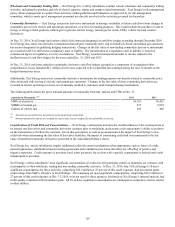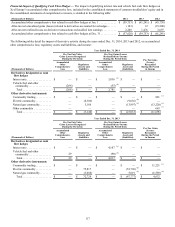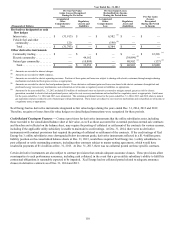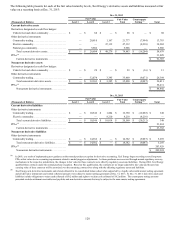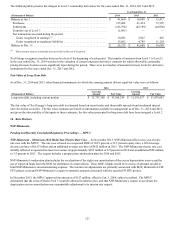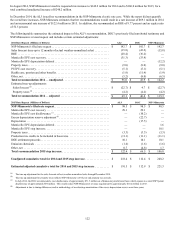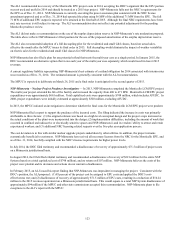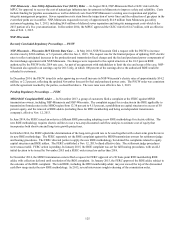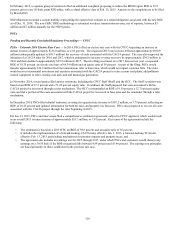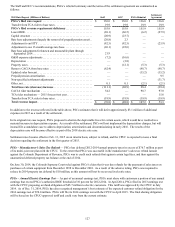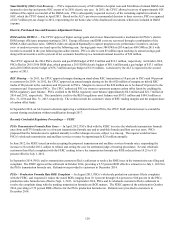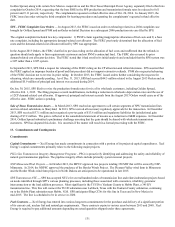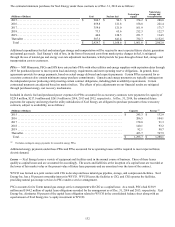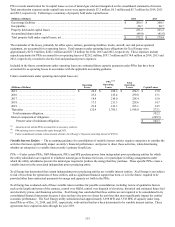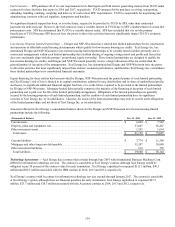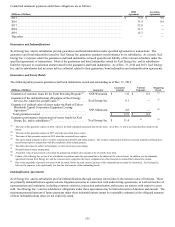Xcel Energy 2014 Annual Report Download - page 143
Download and view the complete annual report
Please find page 143 of the 2014 Xcel Energy annual report below. You can navigate through the pages in the report by either clicking on the pages listed below, or by using the keyword search tool below to find specific information within the annual report.125
NSP-Minnesota – Gas Utility Infrastructure Cost (GUIC) Rider — In August 2014, NSP-Minnesota filed a GUIC rider with the
MPUC for approval to recover the cost of natural gas infrastructure investments in Minnesota to improve safety and reliability. Costs
include funding for pipeline assessments as well as deferred costs from NSP-Minnesota’s existing sewer separation and pipeline
integrity management programs. Sewer separation costs stem from the inspection of sewer lines and the redirection of gas pipes in the
event their paths are in conflict. NSP-Minnesota requested recovery of approximately $14.9 million from Minnesota gas utility
customers beginning Jan. 1, 2015, including $4.8 million of deferred sewer separation and integrity management costs which is the
2015 portion of a five year amortization. In December 2014, the MPUC approved the GUIC rider for $14.7 million, with an effective
date of Feb. 1, 2015.
NSP-Wisconsin
Recently Concluded Regulatory Proceedings — PSCW
NSP-Wisconsin – Wisconsin 2015 Electric Rate Case — In May 2014, NSP-Wisconsin filed a request with the PSCW to increase
electric rates by $20.6 million, or 3.2 percent, effective Jan. 1, 2015. The request was for the limited purpose of updating 2015 electric
rates to reflect anticipated increases in the production and transmission fixed charges and the fuel and purchased power components of
the interchange agreement with NSP-Minnesota. No changes were requested to the capital structure or the 10.2 percent ROE
authorized by the PSCW in the 2014 rate case. As part of an agreement with stakeholders to limit the size and scope of the case, NSP-
Wisconsin also agreed to an earnings cap for 2015 only, in which 100 percent of the earnings above the authorized ROE would be
refunded to customers.
In December 2014, the PSCW issued its order approving an overall increase in NSP-Wisconsin’s electric rates of approximately $14.2
million, or 2.2 percent, reflecting the updated November forecast for fuel and purchased power costs. The PSCW order was consistent
with the agreement reached by the parties, as described above. The new rates were effective Jan. 1, 2015.
Pending Regulatory Proceedings — FERC
MISO ROE Complaint/ROE Adder — In November 2013, a group of customers filed a complaint at the FERC against MISO
transmission owners, including NSP-Minnesota and NSP-Wisconsin. The complaint argued for a reduction in the ROE applicable to
transmission formula rates in the MISO region from 12.38 percent to 9.15 percent, a prohibition on capital structures in excess of 50
percent equity, and the removal of ROE adders (including those for RTO membership and being an independent transmission
company), effective Nov. 12, 2013.
In June 2014, the FERC issued an order in a different ROE proceeding adopting a new ROE methodology for electric utilities. The
new ROE methodology requires electric utilities to use a two-step discounted cash flow analysis to estimate cost of equity that
incorporates both short-term and long-term growth projections.
In October 2014, the FERC upheld the determination of the long-term growth rate to be used together with a short-term growth rate in
its new ROE methodology. The FERC separately set the ROE complaint against the MISO transmission owners for settlement judge
and hearing procedures. The FERC directed parties to apply the new ROE methodology, but denied the complaints related to equity
capital structures and ROE adders. The FERC established a Nov. 12, 2013 refund effective date. The settlement judge procedures
were unsuccessful. FERC action is pending. In January 2015, the ROE complaint was set for full hearing procedures, with an ALJ
initial decision to be issued by November 2015 and a FERC order issued no earlier than 2016.
In November 2014, the MISO transmission owners filed a request for FERC approval of a 50 basis point RTO membership ROE
adder, with collection deferred until resolution of the ROE complaint. In January 2015, the FERC approved the ROE adder, subject to
the outcome of the ROE complaint. The total ROE, including the RTO membership adder, may not exceed the top of the discounted
cash flow range under the new ROE methodology. In 2015, several intervenors sought rehearing of the commission order.



